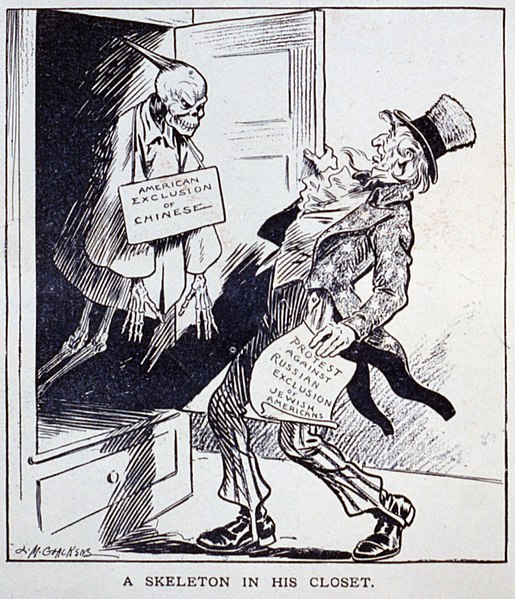
Now that the semester is almost over, we have only two more meetings, I hope that we are all familiar with the many instances that have stressed race as a factor in setting immigration policy in the US. The most salient example of such a discriminatory policy is the Chinese Exclusion Act of 1882. The Chinese had started immigrating in large numbers to the United States in 1848 as a result of the Gold Rush. But as gold became more difficult to find and as unemployment increased after the civil war nativists resentment towards those that looked different grew and Congress was lobbied to exclude the Chinese from coming to the US. Ultimately the Supreme Court, in 1889, approved the Congress’ power to exclude and the act was even widened to include other Asians. This remained the case until 1943 when the exclusion was finally removed.
Ask yourself have things changed much over the past 120 years. The backlash then was against the Chinese, after all, they looked different and many were looking for an easy scapegoat. Currently it is the Hispanic that are blamed for everything from abuse of Medicare, to unemployment and one more time we have a strong lobby that wishes to stop immigration from the southern border. Things have progressively gotten more complicated after the dastardly events of 9/11. Currently the strict enforcement of laws, have ensnared many an innocent person whose only guilt is to be of an Arab decent or to belong to a Moslem sect.
Since there is no denying of the use of racial, religious and ethnic profiling by the Department of Homeland security then we have to ask ourselves whether such a use is justifiable. Let me be very clear about this, under the law as it now stands it is not illegal to use racial profiling in some sense in order to enforce the law. Most objections rest on the solid evidence that the broad use of this technique is totally ineffective. It just does not work. So what is to be done? May I suggest the adoption of positive selection instead of the broad nets that are currently used? What that simply means is that an individual is not subjected to strict and harsh selection criteria unless there is evidence that the person in question has close association with or is a member of a “dangerous” group. What do you think?

